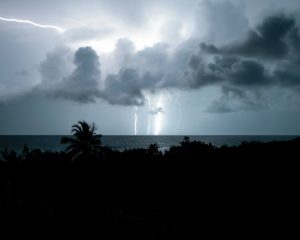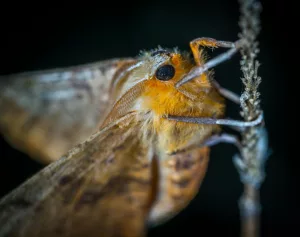Monarch butterflies are known for their remarkable migration patterns, traveling thousands of miles each year. The trigger for this migration lies in a combination of environmental cues and instinctual behavior. As the days grow shorter and temperatures drop in their breeding grounds, monarchs sense the changing season and prepare for their journey. These cues include changes in temperature, daylight, and food availability, which prompt the butterflies to embark on their long migration. Additionally, monarchs possess innate instincts that guide them in responding to these environmental signals, ensuring their survival during the challenging journey.
Photoperiod and Hormonal Changes
One key trigger for monarch butterfly migration is photoperiod, the changing length of daylight. As days shorten in the fall, this acts as a signal for the butterflies to start their migration southwards. Simultaneously, hormonal changes within the monarchs’ bodies also play a crucial role in preparing them for the long journey ahead. These hormonal shifts initiate physiological changes that enable the butterflies to endure the rigors of migration, such as increased energy reserves and altered flight patterns. The combination of photoperiod and hormonal changes serves as a finely tuned mechanism that coordinates the timing of monarch migration with environmental conditions.
The Role of Physiological Adaptations
To support their migration, monarchs undergo significant physiological adaptations. For example, during this period, they enter a state called diapause, a form of reproductive dormancy. This allows them to conserve energy that would otherwise be used for reproduction, redirecting it towards fueling their long journey. The reduced reproductive drive during migration is a fascinating adaptation that underscores the interplay between environmental cues and biological processes.
Monarchs also build up lipid reserves, which are crucial for providing the necessary energy during migration. This energy storage is akin to fueling up before a long road trip, ensuring that they can sustain themselves throughout the arduous journey. Interestingly, the monarch’s metabolism slows down during migration, allowing them to stretch their energy reserves further.
Availability of Food Sources
Another important trigger for monarch butterfly migration is the availability of food sources. Monarchs rely on specific plants, particularly milkweed, for both nectar and as host plants for their caterpillars. When these food sources become scarce due to seasonal changes, monarchs are compelled to migrate in search of better foraging grounds. The dependence of monarchs on specific plant species underscores the intricate relationship between their migratory behavior and the ecosystem. By following the availability of food sources, monarchs ensure their sustenance throughout the migration journey, highlighting the adaptability and resourcefulness of these butterflies.
Understanding the Milkweed and Nectar Connection
Milkweed is not only crucial during the larval stage but also serves as a critical nectar source for adult monarchs. The decline in milkweed habitats due to agricultural practices and urbanization poses a significant threat to monarch populations. Conservation efforts aimed at increasing milkweed availability are essential. Planting native milkweed species in gardens and public spaces can be a practical step individuals can take to support monarch survival.
In addition to milkweed, monarchs require access to a variety of nectar-rich flowers throughout their migration. Flowers such as goldenrod, asters, and liatris provide essential nectar resources. Ensuring that these plants are available along migratory paths can greatly enhance the survival rates of migrating monarchs.
Climate Conditions and Survival Instincts
Climate conditions also play a significant role in triggering monarch butterfly migration. Harsh weather, such as cold temperatures or storms, can be detrimental to their survival. Sensing these impending challenges, monarchs instinctively begin their journey towards warmer and more hospitable regions to ensure their survival. This instinctual response to adverse weather conditions demonstrates the monarchs’ ability to adapt to changing environments and prioritize their well-being. By seeking out optimal climate conditions, monarch butterflies maximize their chances of successfully completing their migratory cycle and maintaining healthy populations.
Navigating Weather Patterns
Monarchs are equipped with the ability to sense changes in atmospheric pressure, which helps them anticipate weather conditions. This skill allows them to avoid storms and take advantage of favorable wind currents, conserving energy during their long flights. This remarkable adaptation is a vivid example of how monarchs have evolved to thrive despite environmental challenges.
For instance, monarchs often wait for favorable weather conditions before crossing large bodies of water. This strategic timing minimizes the risk of being caught in adverse conditions and ensures a safer journey. Understanding how monarchs navigate these weather patterns can inform conservation strategies, such as identifying critical habitats that provide shelter during inclement weather.
Scientific Studies and Research
Researchers have conducted extensive studies on monarch butterfly migration to unravel the intricate triggers behind this phenomenon. By tracking individual butterflies, studying their behavior, and monitoring environmental factors, scientists have gained valuable insights into the complex mechanisms that drive monarchs to undertake their incredible annual journey. Through scientific research, we have deepened our understanding of the interconnected factors influencing monarch butterfly migration, shedding light on the intricate balance of environmental cues, hormonal changes, and survival instincts that govern this natural phenomenon. The continuous exploration of monarch migration serves not only to unravel its mysteries but also to enhance conservation efforts aimed at protecting these iconic butterflies and their critical habitats.
GPS Tracking and Migration Patterns
Recent advancements in technology have allowed scientists to attach tiny GPS trackers to individual monarchs. This has revolutionized our understanding of their migration routes and stopover sites. Discoveries such as the importance of certain regions as critical resting points have influenced conservation strategies. Protecting these key areas ensures that monarchs have safe havens along their journey.
Additionally, data from GPS tracking has revealed the staggering distances monarchs can travel in a single day, sometimes covering over 100 miles. This information highlights the incredible endurance and navigation skills of these butterflies, providing inspiration for further research into their migratory behavior.
Cultural and Ecological Significance
The migration of monarch butterflies is not just a biological wonder; it holds cultural significance as well. Various indigenous cultures have long revered the monarch, often linking its migration to spiritual beliefs. Additionally, monarchs play a crucial ecological role as pollinators, contributing to the health of ecosystems along their migratory path.
Engaging Local Communities
Engaging local communities in monarch conservation efforts can amplify their impact. Education programs that highlight the monarch’s role in biodiversity and cultural heritage foster a sense of stewardship. Community-driven initiatives, like creating monarch-friendly habitats, can significantly boost local monarch populations.
For instance, schools can incorporate monarch conservation into their curricula, encouraging students to plant butterfly gardens and participate in citizen science projects. By involving the younger generation, we can instill a lasting appreciation for monarchs and their ecological importance.
Practical Conservation Efforts
Conservation of monarch butterflies requires a multifaceted approach. Here are some practical tips for individuals and communities to contribute:
- Plant Native Milkweed: Choose species that are native to your region to provide appropriate habitat and food for monarchs.
- Reduce Pesticide Use: Pesticides can be harmful to monarchs and other pollinators. Opt for natural pest control methods.
- Create Butterfly Gardens: Incorporate a variety of nectar-rich flowers that bloom at different times to support monarchs throughout their migration.
- Support Conservation Organizations: Engage with and support organizations dedicated to monarch research and habitat preservation.
- Participate in Citizen Science Projects: Contribute to data collection efforts by tracking monarch sightings and reporting them to scientific databases.
Building Monarch Waystations
Creating designated waystations for monarchs along their migratory routes can provide crucial resources. These waystations serve as refueling stops, offering nectar and shelter. By collaborating with local governments and organizations, communities can establish a network of these vital habitats.
Global Challenges and Future Prospects
The decline in monarch populations is a pressing concern, attributed to factors such as habitat loss, climate change, and pesticide use. Addressing these challenges requires international cooperation and policy changes to protect migratory routes and enhance habitat connectivity.
The Role of Policy and Legislation
Governments can play a pivotal role by enacting policies that support monarch conservation. For instance, banning harmful pesticides and incentivizing sustainable agricultural practices can create safer environments for monarchs. International agreements aimed at preserving migratory corridors are also crucial.
Moreover, cross-border collaborations can ensure that conservation efforts are coordinated and effective. Sharing research, resources, and strategies can lead to more comprehensive solutions that benefit monarch populations across their entire migratory range.
The Essence of Monarch Migration
The migration of monarch butterflies is a testament to the complexity and beauty of nature. It serves as a reminder of the delicate interdependence between species and their environments. By understanding and supporting this phenomenon, we not only preserve a natural wonder but also uphold the intricate web of life that sustains our planet.
By embracing conservation efforts and fostering a deeper connection with the natural world, we can ensure that future generations continue to marvel at the epic journey of the monarch butterfly. As custodians of the environment, each of us has a role to play in safeguarding the vibrant tapestry of life that monarchs so vividly illustrate.
Inspiring Future Generations
Incorporating monarch conservation into educational programs can inspire future generations to value and protect biodiversity. By sharing the story of the monarch’s journey, educators can cultivate a sense of wonder and responsibility in young minds, empowering them to become champions of conservation.



